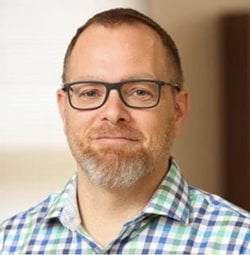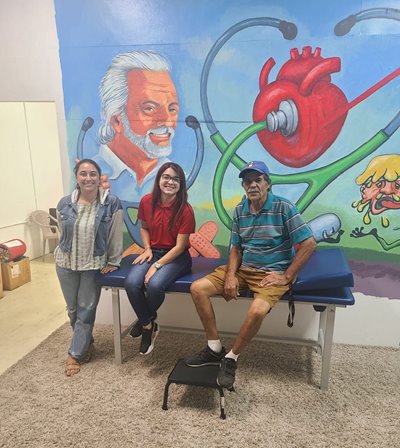In 2020, a storm hit central Virginia that left residents without power for several days. One of Piedmont Housing's properties was without heat, and residents couldn't travel to replenish supplies or charge their phones. So when staff at the Charlottesville nonprofit, together with the community, had a chance to put in protections for residents as part of a redevelopment project, they did. The result will be seen in a new community resource center, part of a larger redevelopment of Friendship Court, recently renamed by residents as Kindlewood. The affordable living community will include apartments and townhouses with solar panels, energy-efficient appliances and more.
 "We have to provide protection for people when their homes are not inhabitable," says Sunshine Mathon, executive director of Piedmont Housing. Mathon will be a panelist at next week's symposium, "Climate Resilience: Fostering Wealth, Health and Sustainability in Communities of Color," to be held during the NeighborWorks Training Institute in Chicago, Illinois.
"We have to provide protection for people when their homes are not inhabitable," says Sunshine Mathon, executive director of Piedmont Housing. Mathon will be a panelist at next week's symposium, "Climate Resilience: Fostering Wealth, Health and Sustainability in Communities of Color," to be held during the NeighborWorks Training Institute in Chicago, Illinois.
The new resource center, part of the redevelopment of a Section 8 property in the heart of Charlottesville, "will be open to our community as a whole," Mathon says. It will include an early childhood center, a computer lab, a community center and the nonprofit's own office space. The center will also employ solar energy that will power the surrounding apartments and solar-battery energy storage for weather-related emergencies.
 "In case there's an emergency where the power goes out, there will be a central place for residents to go to have access to WiFi, to communication, to refrigerators – whether they need medicine or baby formula. Lighting and heating and cooling is necessary."
"In case there's an emergency where the power goes out, there will be a central place for residents to go to have access to WiFi, to communication, to refrigerators – whether they need medicine or baby formula. Lighting and heating and cooling is necessary."
The center and redevelopment are located in a historically Black community that has recently seen an influx of immigrants, primarily from Syria and Afghanistan. Ninety percent of the people who call the community home are people of color.
NeighborWorks America staff leading next week's symposium note that often, disaster resilience is one of the most fundamental and critical ways to practice climate resilience.
"We know that environmental stress means more power outages, more loss of access to potable water and transportation and to the basic necessities of life," says Cormac Molloy, senior manager of Curriculum and Training for NeighborWorks America. "That's why it's great to see NeighborWorks network organizations and industry leaders who are building climate disaster and resiliency centers to guarantee their residents have the resources they need at the moments they most need them."
Mathon says that over the past five years, several weather-related climate disasters hit his community, nestled in the Blue Ridge Mountains. In one case, it was high wind. In another, a snowstorm dumped an unusual amount of snow in the area. "Most recently, we had a deep freeze that impacted properties that weren't designed for those temperatures."
When the events occurred, the surrounding emergency centers were overloaded, Mathon shares. "And it was hard for people to get to those centers in the first place. The property served seniors. Our staff members were stuck." The idea of a center to support residents started right then.
"It's basically a recognition that we need a way to distribute the load in a climate emergency — a way to serve clients directly," Mathon says. "We've seen evidence in the last few years that emergency services struggle to meet everyone's needs and our households are most vulnerable."
—Myrtle Houchens
"We knew that we wanted to provide more than just housing for residents," she says. That's where the spark started for the child development center, then the resource center. Sustainability was important to the committee, too, she says, especially once Mathon explained what solar energy and construction could do.
"Because of the way they've designed these homes and apartments, in the construction and the systems they have put in, it will make a difference in a disaster," she says. And the solar panels and energy efficiency will make a difference in electric bills for clients.
One resident who will be moving in soon told her, "I don't think I'm going to feel air around my windows. The doors are heavy and the air won't blow through."
"When I hear comments like that? Iit's encouraging," says Houchens, who adds that working with the residents has becoming a driving force in her life. "Everyone should be able to say that they have fair, equal, quality sustainable housing," she says. "That's across the board for any and everybody. I knew that's what this community needed and I wanted to make sure that their voices were heard."
The first phase of residential development should be completed by the end of 2023, and residents are already moving into buildings that have been completed. The Community Resource Center, including a food pantry, will start construction in early 2024. Along with Piedmont Housing, partnering agencies will also be onsite, including a University of Virginia nursing program. By the time the entire redevelopment is complete, the number of homes will go from 150 to 400.
Mathon says he's looking forward to getting back to downtown with the move of the main office. Piedmont Housing's current building moved away from downtown for cost savings, but when it did, the number of walk-ins dropped. "Our new offices will be more readily accessible, a single spot embedded in the community."
Each time Piedmont Housing works on a new development, the organization considers energy. "From a climate resilience standpoint, we want to manage long-term energy costs for residents," Mathon says. That includes not only solar, but high-efficiency HVAC systems and construction solutions. Community centers are also key, he says, as are power backups. (Piedmont Housing has been in talks with the county where the senior property was without power about a back-up generator that would provide support for the building.)
Piedmont Housing is not the only NeighborWorks network organization to work on resiliency and

The topic of resiliency was at the center of the organization's recent Community Leadership Institute, held in conjunction with NeighborWorks America. One of the first resiliency centers they worked on was a long-closed school, located in Guaraguao and rescued by the community in the days before Hurricane Maria. The community needed assistance to sustain and develop the school into a community center, and Ponce helped. "As the result of our intervention and support, the school became a resiliency center, with a community kitchen, dining, laundry, medical clinic, shelter, community space for workshops, training, a distribution center when disaster events occur, among other services," Colón Rivera says. "It's getting certified from FEMA as an official shelter." The center also has solar panels, a generator and a water tank.
"Right now Ponce NHS is in the process of developing more than 10 resiliency centers, which are located in the southern and central regions of Puerto Rico," Colón Rivera says. Half of them are already up and running.

